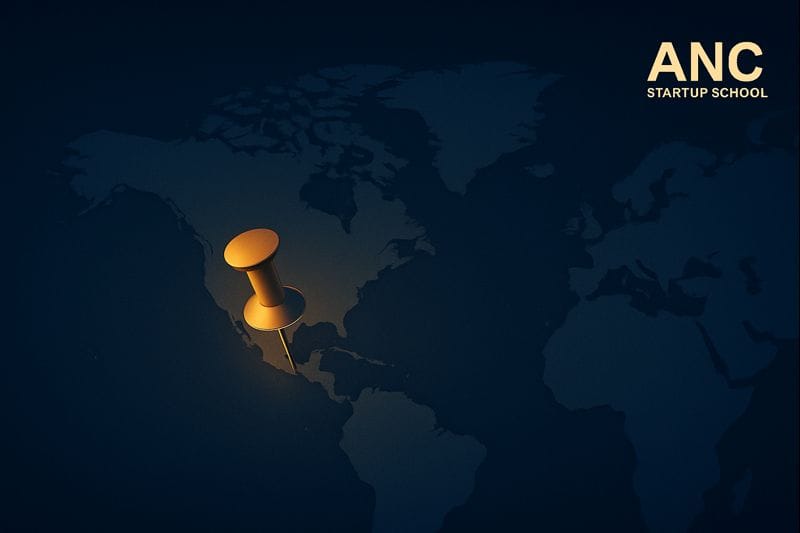If You’re Solo, You’re Already on the Path to Failure—Here’s Why Nobody Warns You
Let’s rip the Band-Aid off: If you’re a solo founder, nobody’s coming to save you—and your greatest risk isn’t running out of money, competitors out-innovating you, or being shut out by VCs.
Your real killer? Working alone, in the shadows, with zero high-skin-in-the-game allies or operator peers.
The lone-wolf founder myth is a Silicon Valley sales pitch—every real operator knows isolation destroys even the best businesses from the inside.
Startup death by isolation is slow, silent, and 100% optional. Here’s why—and exactly how to fix it.
Context/Problem: The Startup Graveyard Is Filled With Lone Wolves
Let’s be clear: You can start alone, but you cannot build anything globally significant solo for long.
The bootstrapped myth—hero founder in a dark room, grinding 18-hour days, overcomes all odds—is great for newsletter engagement but catastrophic for real business.
Here’s the inconvenient truth:
Isolation is a multiplier for every other founder risk:
- No one to challenge your dumb ideas (you will have many)
- No reputational backstop when things go sideways
- No emotional ballast when deals fall apart or lawsuits land
- Zero network effect—hard stops to new markets, talent, and capital
The Data (and Real Numbers):
- Solo founders fail at double the rate of teams: Harvard Business Review and Crunchbase: Only 18% of billion-dollar startups had solo founders; survival rates for solo vs. co-founder teams drop by over 30% in the first five years.
- Immigration proof bias: O-1, Canadian SUV, and most startup visa programs privilege teams and partnerships—75%+ of successful applicants in “founder” streams have at least two signatories with major skin in the game (see USCIS O-1 data and IRCC SUV profiles).
- Mental health bomb: 72% of entrepreneurs report mental health challenges; single founders are at the high end of that range (UC Berkeley Study).
Nobody talks about these numbers because “resilient solo operator” sells better than “build with the right allies or die.”
Framework/Solution: Operators, Allies, and the Business Build Stack
Stop idolizing the solo grind—be the founder the market can’t ignore by engineering an ecosystem around your business. Here’s the blunt, data-backed breakdown:
1. Turn “Alone” Into “Allied": Skin-in-the-Game Partners > Generic Co-Founders
Not all “teams” are created equal—and adding passengers is worse than staying solo. But high-caliber, operator-level partners deliver:
- Cognitive diversity: Kill bad ideas faster. One founder’s “genius” is another’s obvious misstep.
- Reputational armor: Multiple respected operators vouching for a business crushes single-source risk for immigration, funding, and clients.
- Division of hell: Real operators share the legal, financial, and operational hell moments—burnout risk drops by half (source: [UC Berkeley])
Framework: The “Team Capital Table”
| Cap Table Role | Value Driver | Immigration Impact | Survival Impact |
|---|---|---|---|
| Operator-Partner | Shared workload, network | Strong endorsement, dual bio | + + + |
| Passive/Investor | Money, not much else | Counts for some, not enough | + |
| Freelancer/Agency | Execution, zero skin | Irrelevant | 0 |
| Solo Founder | 100% your risk | Weak narrative | - - - |
2. Stop Farming Twitter for Feedback—Build a Confidential “Operators Table”
You will get more honest market feedback—and more “immune system” for your business—by cultivating 3-5 outsiders with real experience, even if they’re not public. Forget entrepreneurship “communities”; you need:
- Direct critique: People who will call bullshit, not signal-boost your LinkedIn dopamine.
- Private solution space: Actual operators want to share in closed rooms, not on public threads.
- Immigration edge: Endorsements from real-world proven founders (not “advisors” or Twitter celebs) are worth 10x more in any business or visa process.
Brutal Truth: Three signed letters from respected founders using your product moves the needle more than 10,000 fake “beta list” upvotes.
3. Systemize Anti-Isolation—Founder “Operating Layer” Model
Build “connection” into your operating system, so you never slip into solo delusion:
a) Weekly War Room Calls
Lock in one call/week with those 2-3 real allies. Not for “accountability,” but to share what’s actually going wrong or getting stuck. No slides.
b) Live Data Room / Reality Office Hours
Every month: share numbers, failed experiments, legal challenges. No narrative-bending. Invite critique.
c) Cross-Stage Operator Summits
Quarterly: Meet with 2-3 founders at later/earlier stages outside your industry in-person or via Zoom, purely for business exchange (not “networking” pap).
“You can’t build a global company out of one mind. You need a syndicate of lived experience—assembled, not inherited.”
4. Remove “Complacency Loops": Outsider Pressure as a Value Engine
Working solo is the death of urgency. True allies bring the right pressure:
- Challenge forecasts and plans
- Compete to spot risk before it metastasizes
- Share loopholes, strategies, legal/immigration pitfalls
No, your mom or Twitter likes don’t count.
Table: “Feedback Loops That Make or Break Startups”
| Source | Frequency | Value | Immigration Utility | Survival Utility |
|---|---|---|---|---|
| Solo Reflection | Daily | Tiny | None | - |
| External Operator | Weekly | Max | Huge | ++ |
| Public Forums | Random | Mostly Fluff | Zero | +/– |
| Passive Investor | Monthly | Boring | Minimal | + |
Case Study: “Mari” — Escaped the Lone Wolf Death Spiral (and Got a Blockbuster O-1)
Mari, an ANC client, spent three years alone building an AI B2B analytics SaaS. $700k ARR, zero outside investors, 100% founder labor. Application for O-1 failed twice: “insufficient national impact, limited recognizability.” Then she did what nearly all bootstrappers avoid:
- Recruited an operator partner from her largest enterprise client (more industry cred than any VC)
- Formed a real “operators’ table” with three industry veterans, swapped benchmark data and feedback each month
- Invited brutal feedback: They forced her to rebuild pitch and evidence to focus on market impact, not invention
Result: Within six months, Mari’s O-1 succeeded (35 pages of peer validation + third-party endorsements; not a single “influencer” or VC in sight). The next fundraising round became inbound for the first time; Mari reports “I spend half as much time stuck, and sleep an extra two hours a night.”
| Mari’s Lone Wolf Phase | Mari’s Allied Phase |
|---|---|
| One founder, $0 outside testimony | Two operators + three endorsers |
| Rejected O-1; “not enough proof” | Approved O-1; “market impact” |
| Burnout every quarter | Net gain in energy |
| 2 customer meetings/month | 5+ exec intros/month |
Action Steps: The “Ally Operating System” Quick Build
Forget finding a “perfect co-founder.” Build your anti-solo infrastructure:
- Identify 2-3 operators—not friends, not fans. Actual business builders.
- Set up a monthly War Room call: Agenda-free, only “what’s actually not working?”
- Share your real data: Screenshots, not stories. Let them critique your growth, risks, market moves.
- Request at least two “hard” endorsements: Not fluff. Be specific: “Can you document how my solution delivered $X or Y% outcome in your org?”
- Stack alliances for immigration programs: Map how each key partner or operator improves your narrative (revenue, recognition, outcome).
CTA & Conversion: You Can’t Build a Great Company Alone—Let’s Build Your Operator Table
Solo is not brave. Solo is death by gradual irrelevance. The founders who win have operator allies, critical feedback, and external “muscle” baked into their system.
Your move: Grab the Founders’ Anti-Isolation Checklist (below), and book a blunt strategy call. We’ll break down how to root out solo risks in your business and build an “Operators Table” that levels up your venture and your global mobility.
Or if you want the world’s most honest founder strategies in your inbox, join the ANC newsletter right now.
“The only thing more overrated than raising VC is being the last lone wolf standing.”





